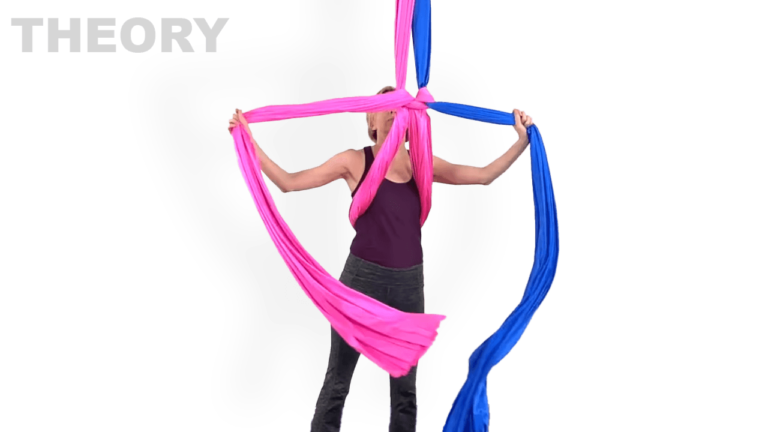Silks
|
|

Already a Member? Log in to continue.
The direction that the tails go to form the belay loop determines which type of belay you’re in. This tutorial explores two different types of belay on aerial silks from a theory perspective, with the tails going towards the leg side and the tails going towards the head side. These differences affect the entries and especially the exits out of a belay, as well as the movements possible inside the belay loop itself.
Become an Aerial Fit Online member to access the video for Two Types of Belay Theory. This in-depth video will explain how to properly train this skill. It also includes cross references to the most important Building Blocks, Common Mistakes, Related Drills, Ground Drills, Variations, Next Steps and Sequences.
Already a Member? Log in to continue.
Some of the most important aerial silks skills, related movements, and prerequisites from our aerial video tutorial library that students should be very comfortable doing to succeed at Two Types of Belay Theory.




These are the most common mistakes we see with students when they are learning how to do the aerial silks skill Two Types of Belay Theory and detailed directions on how to fix these problems to make the skill look and feel easy.




These similar aerial silks skills and aerial drills are helpful to troubleshoot and help with problems. Students don't need to have mastered the Two Types of Belay Theory to work on these related skills and drills. These drills may help your students make important connections and answer the question "What am I doing wrong?".




These are some of our favorite ground drills for aerialists for Two Types of Belay Theory. They can be used as part of the ground warm up or as part of the aerial class teaching progression.




These are different variations of Two Types of Belay Theory. Students should be very comfortable with the current skill before working on these different or more advanced variations. They can be used for further exploration, managing students with different levels and adding variety to aerial silks choreography.




These are the next steps we teach to our aerial silks students after they’re comfortable with Two Types of Belay Theory. The next steps can be started right away and they lead toward specific future goals which are often the most advanced aerial silks skills.




These are some of the more advanced silks skills that build on the strength and control taught in Two Types of Belay Theory. They are not the next immediate steps, but rather long term planning goals.
These are aerial silks sequences, transitions, and combinations that include the aerial skill Two Types of Belay Theory. They are fun, creative, and challenging sequences from our aerial video tutorial library.



